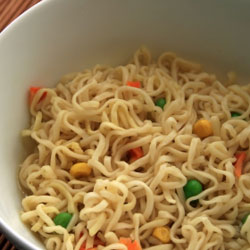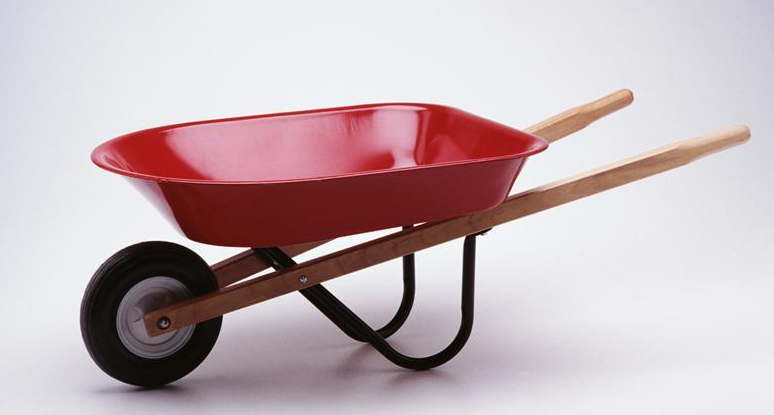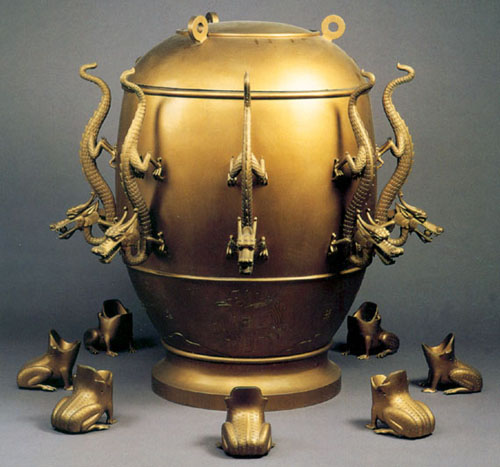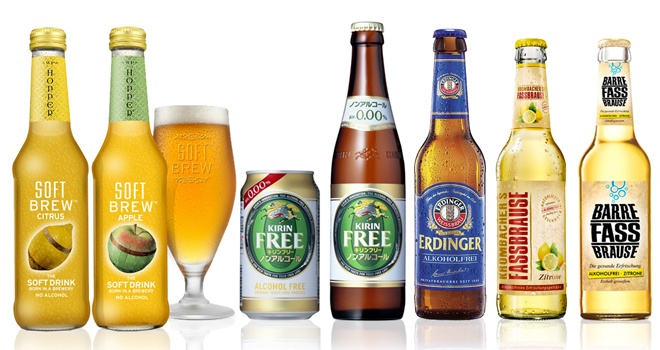(单词翻译:单击)
7.Pasta
7.面食
Anybody who loves a good bowl of pasta e fagioli or linguine and clams may want to tip his hat to the ancient Chinese for coming up with pasta -- not the Italians, as you may have suspected.
对任何喜欢来一碗意大利面豆汤或者蛤蜊扁意面的人来说,也许都需要对发明面条的古代中国人致敬——而不是意大利人,正如你所怀疑的一样。
The jury is still out on this one, but it looks like the Chinese beat either the Italians or the Arabs (it's unclear which) by around 2,000 years. In 2006, archaeologists excavating a 4,000 year-old settlement at Lajia in the Qinghai Province near the Tibetian border uncovered an overturned bowl of stringy noodles buried beneath ten feet of earth.
专家组仍在商讨到底是谁率先发明面条这件事,但看起来似乎是中国人凭借着近2000年的优势力压意大利人和阿拉伯人(还不清楚是哪一个),成为最终的赢家。2006年,考古学家在发掘喇家遗址时发现了一只倒扣的碗,深埋于十英尺厚的土中,碗内有细长而干枯的面条。该遗址位于青海省境内,靠近西藏,距今已有4000年的历史 。

The newly discovered pasta may be the world's oldest. It's made from two types of millet grain, both of which have been cultivated in China for about 7,000 years. What's more, the Chinese still use these grains to make pasta to this day.
这一新发现的面条可能是世界上最古老的,由两种在中国均已有7000年栽培史的谷物制成。并且,时至今日,中国人仍在用这些谷物来制作面条。
6.Wheelbarrow
6.独轮手推车

The Chinese are also responsible for easing the burden of humans around the world and across time with the wheelbarrow. A general named Jugo Liang, who lived during the Han Dynasty, is widely credited with coming up with the concept of a one-wheeled cart used to carry heavy objects in the second century. Jugo's conception missed the mark just a bit; he didn't add the barrow (handles) that came later as his invention was refined. Still, Jugo beat the Europeans by about 1,000 years with his wheelbarrow.
千百年来,中国人发明的独轮手推车为减轻人类负担做出了巨大的贡献。人们普遍认为,公元2世纪时,蜀相诸葛亮提出了发明独轮手推车用来运载重物的构想。诸葛亮构思的独轮手推车仅有一点点瑕疵,因为他没有为其加上把手,不过这一问题被后人改进完善。尽管如此,诸葛亮的发明还是领先了欧洲人1000多年。
Originally, the vehicle was intended for military purposes. Recognizing the physical advantages the wheelbarrow gave its armies over any enemies -- they were used as mobile barricades as well as for transportation -- the Chinese kept their invention secret for centuries.
最初,独轮车被用于军事目的。正因认识到了独轮车为我方军队战胜敌军带来的先天优势——独轮车即既可被用来充当移动的路障,也能被当作运输工具——古代中国人将这项发明保密了长达几个世纪之久。
An old folktale also gives the credit for inventing the wheelbarrow to a farmer from the first century B.C. named Ko Yu. Although his existence is questionable, there is a common thread between Jugo and Ko: Like the general, the farmer is said to have kept the wheelbarrow secret by describing it in code.
而民间的另一种传说则认为早在公元前1世纪,一个叫柯宇(KoYu)的农民就发明了独轮手推车。尽管历史上是否真的存在这个人还是个疑问,但诸葛亮和柯宇倒是有个共同点:和丞相一样,据说这位农民也对独轮车的制作流程守口如瓶。
5.Seismograph
5.地动仪

Although the Chinese couldn't tell anyone exactly what an earthquake measured on the Richter scale (since the Richter scale wasn't created until 1935), they did manage to invent the world's first earthquake detector -- a seismograph. Not only did imperial astronomer Chang Heng create a seismograph during the Han Dynasty in the early second century, he created a magnificently beautiful one.
尽管古代中国人并不能准确地告知世人一场地震是里氏几级(因为直到1935年里氏震级才被发明出来),但他们却设法发明了世界上第一个地震测量仪——地动仪。早在公元2世纪前叶,汉代天文学家张衡就创造出了地动仪,他发明的地动仪还巧夺天工、壮观宏伟。
Heng's creation was a heavy bronze vessel with nine dragons facing downward embedded into its outside. The dragons were spaced equidistant from one another on the vessel, and below each dragon, a detached frog looked upward as each frog held its mouth open.
张衡发明的地动仪以青铜铸成,四周镶嵌以八条龙,龙头朝下。这八条龙等距离间隔,每条龙的正下方,都有一只昂头张嘴的铜蟾蜍。
Inside the vessel, a pendulum hung motionless until a tremor moved it. At this point, the pendulum's swing set the seismograph's internal levers in motion. This would trigger the release of a ball held in the mouth of the dragon facing the direction of the earthquake's epicenter. The ball would then fall into the mouth of the frog directly below it. This first seismograph seems a bit basic, but it would be another 1,500 years before Western nations developed their own versions.
地动仪的内部正中,有一支“悬摆锤”静止不动。当某个地方发生地震,“悬摆锤”受到震动时,就会随之运动。此时,“悬摆锤”来回摆动引发地动仪内部的杠杆活动,从而触动机关,使得地震源方向的龙头张开嘴,吐出铜球,落到铜蟾蜍嘴中。这一最初的地动仪虽然有点简陋,但比起西方发明的地震仪仍然早了1500多年。
4.Alcohol
4.酒精

You can thank the Chinese for ethanol and isopropyl alcohol -- not to mention beer, wine and liquor. When you think of it, few of man's ingenuities have delivered as much joy and sorrow as alcohol.
你得感谢中国人创造出了乙醇和异丙醇,这里说的并不是啤酒、葡萄酒跟烈酒噢!当你想到酒时,也就明白只有极少数人类智慧的结晶能像酒那样让人欢喜让人忧。
For many years, it was assumed that alcohol fermentation grew out of other, similar processes. By the early third century B.C., the Chinese had figured out how to refine food products like vinegar and soy sauce using the techniques of fermentation and distillation. Alcoholic spirits would soon follow.
一直以来,人们都认为酒精发酵技术脱胎于其他相似的工艺。公元前3世纪前期,中国人就掌握了酿造醋和酱油的技术,而这都是通过发酵和蒸馏来实现的。因而这些技术也很快就被运用到酿酒中。
Recent archaeological discoveries have pushed the date for Chinese fermentation and the creation of alcohol much further back. Nine-thousand-year-old pottery shards uncovered in Henan province show traces of alcohol. This discovery proves that the Chinese were the first to make alcohol, since the previous title holders, the ancient Arabs, didn't come up with alcoholic drinks until 1,000 years later.
最近的考古发现又使中国人利用发酵工艺制酒的时间向前推移。考古学家在河南省发现了9000年前的陶器碎片,并在其中觅到了酒的踪迹。这一发现证实了中国人才是酿酒的鼻祖,因为曾经的酿酒先驱——古阿拉伯人直到1000年后才制造出含酒精的饮品。
审校:落月 编辑:listen


